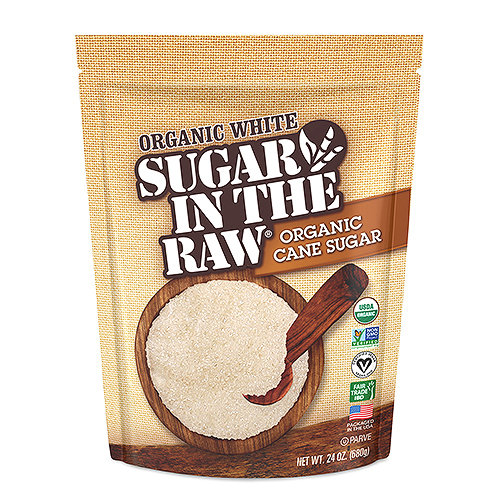Understanding Cane Sugar Processing: A Comprehensive Overview of the Stages
Understanding Cane Sugar Processing: A Comprehensive Overview of the Stages
Blog Article
A Comprehensive Overview to the Environmental Impact and Sustainability Practices in Cane Sugar Processing
The ecological impact of walking cane sugar handling provides an intricate variety of difficulties that warrant mindful evaluation. From soil destruction and extreme water usage to the carbon impact linked with farming and production, the repercussions of standard practices are far-ranging. In contrast, the adoption of ingenious sustainability procedures supplies a path toward more accountable manufacturing techniques. Recognizing the interplay between these concerns is essential for stakeholders in the market. What particular techniques can be applied to strike an equilibrium between performance and environmental stewardship? The answers hinge on a closer consider both the obstacles and possible services.
Overview of Cane Sugar Handling
Walking stick sugar handling involves a series of systematic actions that transform sugarcane into polished sugar. At first, gathered sugarcane is delivered to processing centers, where it undergoes cleaning up to eliminate soil and debris. Following this, the walking stick is crushed to remove juice, which is then made clear by getting rid of impurities via heating and the addition of lime.
The made clear juice goes through evaporation, where water is eliminated to focus the sugar content. These crystals are divided from the remaining syrup making use of centrifugation, resulting in raw sugar.
The end product is then dried out and packaged for circulation. Throughout this whole process, preserving efficiency and quality assurance is vital to make sure the sugar satisfies market criteria. Each action in walking stick sugar processing not just contributes to the end product but additionally has effects for resource use and waste generation, setting the stage for conversations on sustainability and ecological impacts connected with sugar production.
Environmental Obstacles of Manufacturing
The manufacturing of walking stick sugar provides a number of considerable environmental challenges that warrant focus. One main concern is the considerable use agrochemicals, consisting of pesticides and fertilizers, which can result in dirt deterioration, biodiversity loss, and contamination of neighborhood water sources. The overflow from sugarcane areas usually carries these chemicals into close-by communities, interrupting marine life and affecting the wellness of neighborhoods reliant on these water bodies.
An additional obstacle is the high power consumption related to sugarcane processing. The boiling and refining phases require substantial warmth, largely produced by melting fossil fuels, adding to greenhouse gas exhausts. In addition, the extensive acreage required for sugarcane growing can lead to logging and habitat devastation, additional worsening climate change and harmful wild animals.
Furthermore, the labor practices in some regions increase ethical concerns, as workers might deal with inadequate working problems and poor salaries. This circumstance usually continues a cycle of destitution in regional neighborhoods. Cane Sugar Processing. Resolving these ecological difficulties is important for developing extra sustainable techniques in walking stick sugar production, inevitably profiting both the setting and the communities associated with this market
Water and Land Use Impact
Water resources and land use are essential elements in the walking cane sugar industry that substantially impact the setting. The cultivation of sugarcane requires considerable water input, with price quotes recommending that it can take in as much as 2,000 liters of water per kg of sugar generated. This extensive use of water often results in deficiency of regional water sources, impacting not only the sugarcane plantations yet likewise bordering environments and communities that depend on the exact same water sources for agriculture and domestic usage.

Furthermore, land usage for sugarcane farming can cause deforestation and the conversion of all-natural habitats right into monoculture haciendas. This technique reduces biodiversity, interferes with neighborhood ecological communities, and contributes to dirt degradation. The growth of sugarcane fields typically intrudes on valuable farming land, creating competitors for sources between food and biofuel manufacturing.
Sustainable techniques, such as maximizing watering strategies and implementing crop rotation, are necessary to reduce these influences. By adopting extra reliable water usage and land management methods, the cane sugar industry can reduce its ecological footprint, making sure a balance in between agricultural efficiency and environmental conservation.
Greenhouse Gas Emissions
Greenhouse gas emissions represent a substantial environmental concern within the walking stick sugar processing industry, particularly as agricultural practices expand to satisfy international demand. The farming of sugarcane, a crop that thrives in exotic climates, counts greatly on artificial plant foods and chemicals, which add to laughing gas exhausts. Additionally, land-use changes, including logging for brand-new sugarcane plantations, release carbon dioxide saved in greenery and soil.
Throughout handling, energy consumption is an additional major resource of greenhouse gas discharges - Cane Sugar Processing. Several sugar mills make use of nonrenewable fuel sources to power machinery and generate heat, resulting in substantial carbon impacts. Furthermore, the transportation of raw sugarcane and completed items that site includes layers of emissions with fuel burning in lorries
This involves examining present farming practices, processing techniques, and transport systems to identify locations for enhancement and reduction. Resolving greenhouse gas discharges is necessary for cultivating a more sustainable cane sugar industry in an altering environment.

Lasting Practices and Innovations
Sustainable methods and innovations are significantly essential in the cane sugar processing industry as stakeholders look for to lower environmental effects while keeping performance. One considerable innovation is the implementation of incorporated plant administration, which optimizes source usage by incorporating dirt monitoring, insect control, and crop rotation methods. This technique boosts return while lessening chemical inputs and maintaining dirt health.
Additionally, the fostering of renewable resource sources, such as biomass from sugarcane deposits, has actually gained traction - Cane Sugar Processing. By converting waste items right into power, processing centers can decrease their reliance on nonrenewable fuel sources, therefore lowering greenhouse gas emissions
Water administration practices have additionally seen enhancements through the recycling and reusing of water in handling plants, significantly minimizing freshwater intake. Developments in technology, such as precision agriculture, enable farmers to keep track of crop health and wellness and resource use a lot more properly, guaranteeing lasting growing methods.
Additionally, accreditation programs like Fair Trade and Rain forest Alliance motivate environmentally accountable farming practices and advertise social equity within the supply chain. By embracing these sustainable practices and technologies, the walking cane sugar handling sector can improve its durability and add favorably to ecological stewardship.
Conclusion
The environmental effect of walking cane sugar processing provides considerable difficulties, including soil degradation, high water usage, and greenhouse gas exhausts, together with moral concerns connected to labor methods. Dealing with these concerns with sustainable methods, such as incorporated crop administration, renewable resource adoption, and water recycling, is important. By promoting environmentally accountable and socially equitable methods in sugar production, the market can reduce its damaging results, guaranteeing a more lasting future for both environments and areas associated with this industry.
Walking stick sugar handling includes a collection of methodical steps that change sugarcane right into polished sugar. Each step in walking stick sugar processing not only adds to the final item yet a fantastic read also has implications for source usage and waste generation, setting the phase for discussions on sustainability and environmental influences associated with sugar manufacturing.
Greenhouse gas exhausts represent a considerable environmental issue within the cane sugar handling market, especially as agricultural techniques broaden to meet worldwide demand.Lasting practices and technologies are progressively this vital in the walking cane sugar handling industry as stakeholders seek to minimize ecological effects while maintaining performance.The ecological impact of cane sugar processing presents significant challenges, consisting of soil degradation, high water consumption, and greenhouse gas exhausts, alongside moral worries related to labor methods.
Report this page